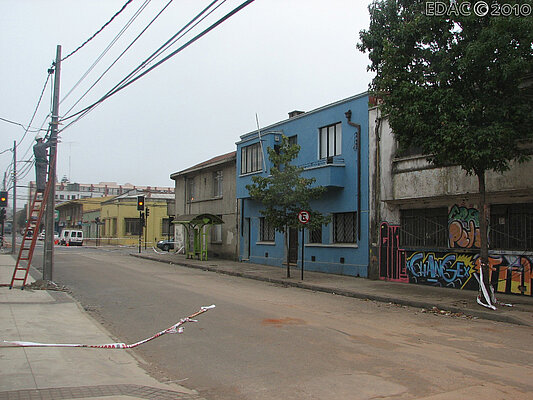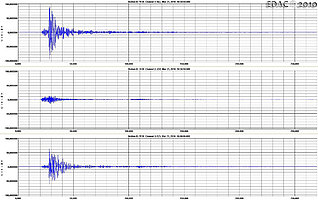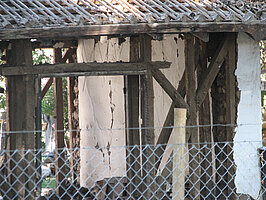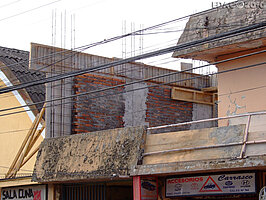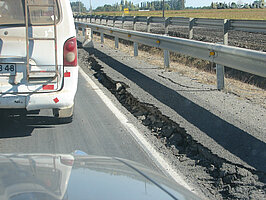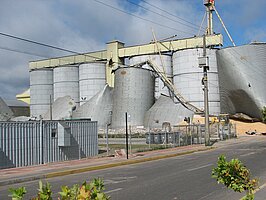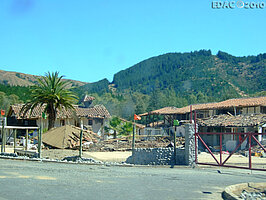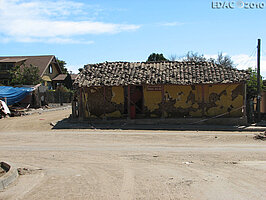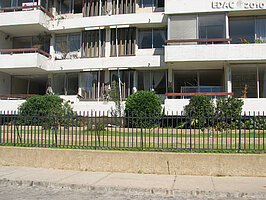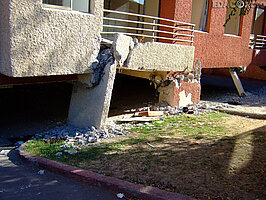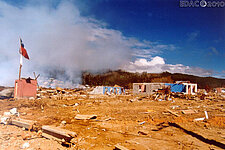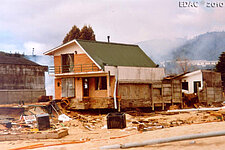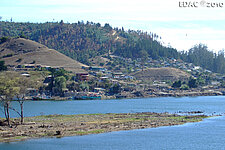TaskForce Mission Chile 2010
Earthquake of February 27, 2010 (08:34 CET)
Parameters of the mainshock:
Date: 27.02.2010, 06:34:11 UTC
Magnitude: M 8.3 (GEOFON)
Focal depth: 24 km
Coordinates: 72.75°W 36.05°S (GEOFON)
Region: Near Coast of Central Chile
Field-mission team of German TaskForce for Earthquakes:
Dipl.-Ing. L. Abrahamczyk, Dr.-Ing. H. Maiwald, Dipl.-Ing. Arch. D. Lobos (Bauhaus-Universität Weimar)
Head:
Dr.-Ing. J. Schwarz (Bauhaus-Universität Weimar)
Parties involved:
A first statement
The extent of damage to the building stock (in the sense of damage grade) due to the Magnitude 8.8 Chile earthquake can be evaluated as moderate till minor. However, extensive the damage has been assessed in some major afflicted areas (e.g. Constitucion, Dichato) due to the tsunami.
The reasons for the moderate earthquake damages could be the result of the large distance of the epicenter and due to the different design philosophy of the building code and its practical application in Chile.
Because of the high frequency of earthquake occurrence, generally, the engineers like to avoid damages in the structures after an earthquake. In other countries damages are allowed at special points (locations) and in a defined extent (“Performance-based Design”).
Chile is located in a very active seismic region; therefore, the country experienced the strong earthquake shacking periodically (e.g. 1960, 1985). The main reason of the high seismicity is the movement (several cm per year) of the Nasca-Plate under the South-American-Plate which results in the increase of stress in the region.
The large number of undamaged or only slightly damaged buildings confirms that the right lessons were driven from the strong earthquakes in the past and implemented in an effective manner.
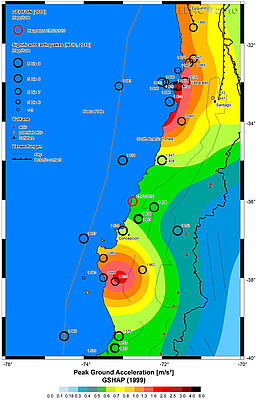
The enormously high magnitude of the earthquake could be estimated here in Weimar at the real-time registration of the Bauhaus-Station, just few minutes after the event.
In the framework of this mission, instruments were temporarily installed at different buildings to measure the building response due to the aftershocks. Some stronger events were recorded, which would be interesting and relevant for the design in German Earthquake regions.
The transfer of the experiences from previous earthquakes could be found in the preferred construction types, too. Next to the traditionally adobe clay, simple masonry and wood structures (which are still often used particularly in the rural regions) massive reinforced concrete wall structures dominates in the region, which in the past behaves quite well under earthquake loads.
Also many buildings are constructed as confined masonry which offers pretty well earthquake resistance as experienced world-wide.
Apart from the high magnitude of the earthquake and following tsunami, the damages to the multi-story RC buildings were main investigation aspect during the stay in Chile. The main tasks included the identification and reasons of the damages and in particular, the transfer of the gained experiences to other regions.
Like almost every major earthquake, there were spectacular damage cases in the structures due to strong earthquake shaking, which makes the engineers aware of the specific defects in the structure. They are usually due to the unfavorable overlapping of several damage causing parameters.
Infrastructure:
Following the main event and the several aftershocks, substantial damages to the infrastructure occurred. Some bridges suffered tremendous damage collapsed and many more had to be closed for the traffic. Furthermore, numerous cracks and large settlements were observed in the streets.
Special structures:
Single isolated special structures (Silos) suffered total loss and collapsed. The reasons for the stability failure have to be investigated in each specific case.
Multistorey residential buildings:
Damages to structures design by engineers were mainly happen at multi-story buildings with more than 10 floors, which could be, because of the special characteristic of the earthquake motion and the behavior of the weak, amplifying subsoil. The Eigen frequencies of this type of structure approximately match with the long period frequency content of the earthquake, which is not fully considered in the current code.
Another reason could be the change of the construction and design philosophy during the last years. Because of different influences, the thickness of structural wall elements was dropped to around 15cm from 30cm, which had mainly contributed to the damage of the buildings.
In the Tsunami affected cities of Dichato and Constitución, the damages caused by the shaking of the earthquake were relatively small. Only minor damage could be observed at topographically higher located buildings..
Especially the simple, adobe structures as well as the lightweight wooden constructions were totally destroyed by the tsunami (sometimes partially). But also more massive construction types sustain heavy damages, e.g. scouring of the foundation.
In dependence of the form of the coast, different impacts of damage could be observed. The exact situations still have to be analyzed and investigated. Especially, there are different information and observation available at the moment about the number and height of the tsunami waves.
In general, the coastal area of Chile is prepared for Tsunami, but the focus seems to have been on the evacuation of the affected area. It should be considered that the last tsunami occurred in this region 50 years ago.
A comparison of the effects due to the tsunami after the Sumatra-Andamanen-Earthquake 2004 can provide the basis of the other coastal features and construction methods for future.
In the forefront of the trip, contacts with local engineering and architecture faculties were made.
Universidad de los Andes
Prof. Jorge Crempien
Decano Facultad de Ingenieria Civil
Santiago - Chile
Universidad de Santiago de Chile
Facultad de Ingenieria, Depto de Ingenieria Geografica
Prof Victor Herrera
Santiago - Chile
Universidad del Bio-Bio
Facultad de Arquitectura, Construcción y Diseño
Rodrigo Garcia
Conceptión - Chile
Universidad de Concepcion
Facultad de Ingenieria
Prof. P. Dechent
Conceptión - Chile
They supported the work in the field through the provision of their already exiting knowledge about the damage areas, the identification of buildings to install the strong-motion instruments of the German TaskForce.
Experience
From this strong earthquake, many lessons for the engineering analyses of earthquake damages could be derived, e.g. concerning the behavior of different construction types and the efficiency of the applied code standards. The way of interpretation will follow the already existing lessons from different earthquake field missions of the engineering group of the German TaskForce earthquakes.
The general experiences from this field mission are:
- The help was very welcome, which is not necessarily self-evident.
- The application of instruments was necessary and will also be important in the future during other similar missions. The reasons are mainly the less number of available instruments and the less capacity of personnel due to other tasks directly after such an event.
- The experience and skills to quickly evaluate/assess damages and to decide about ad-hoc repair and strengthening measures related to each specific situation were/are in demand.
- In the past, already successful established link with the different experiences of architects and engineers was renewed and can be regarded as positive and could be a signal for the University to increase the collaboration between the faculties.
In the frame of this field trip, data could be recorded to describe the behavior of different multi-story residential buildings, the effect of the earthquake and the following tsunami was partly documented and contacts were established for further collaboration.
Continuing approach
In the first step, the received data will be analyzed and published. Afterwards further data will be collected in close collaboration with the local partners. The results will be published or presented in workshops to the broad public especially the local institutions. There are good experiences available from another project in south Turkey. It will be the aim to combine the experiences of all involved partners in the in the frame of bilateral/ international projects to develop models for the coastal areas of Chile to evaluate and minimize damages, which considers the hazards due to earthquakes in combination with tsunamis.
The lessons from the Chile earthquake from February 27, 2010 will be directly implemented in the lectures of the master course „Natural Hazards and Risk Engineering“(NHRE), to transfer the good experiences of the behavior of some building types into other earthquake afflicted regions . In the frame of the new arrangement of the master course important components will be introduced or extended, which will prepare the engineers to the requirements and provide necessary resources for implementation of the risk reduction in the case of an event.
Organizational processing and funding
The mission was carried out in the frame of the German TaskForce for Earthquakes and was organized and realized by the Earthquake Damage Analysis Center of Bauhaus-Universität Weimar. In Santiago de Chile, a coordination meeting with the seismologist of GFZ Potsdam was conducted, which were working there, too. The German embassy was involved in the itinerary/travel planniong and the mission.
The mission was funded by different sponsors. Especially the support from “German association for earthquakes and structural dynamics” and “The Hannover Re” is highly appreciated.
literature
Schwarz, J., Schmidt, H.-G. (1997):
Ingenieuranalyse von Erdbebenschäden: Lehren aus aktuellen Ereignissen. Bautechnik 74 (1997) 12, 826--846.
Schwarz, J., Lang, D.H., Raschke, M. (2000):
Die Erdbeben in der Türkei am 17.08.1999 und 12.11.1999. Ein Beitrag zur Ingenieuranalyse der Schäden. Bautechnik 77 (2000) 5, 301--324.
Schwarz, J., Lang, D.H., Raschke, M., Schmidt, H.-G., Wuttke, F., Baumbach, M., Zschau, J. (2000):
Lessons from recent earthquakes – field missions of German Task Force. Proceed. of the 12th World Conference on Earthquake Engineering, Auckland, New Zealand, Januar 30–February 4, 2000. Special Theme Session.
Schwarz, J., Abrahamczyk, L., Lang, D.H., Maiwald, H. (2004):
Ingenieuranalyse von Erdbebenschäden: Das Bingöl (Türkei) Erdbeben vom 1. Mai 2003. Bautechnik 81, 6, Juni 2004.
Schwarz, J., Abrahamczyk, S. Amstein, Kaufmann, Ch., Langhammer, T. (2006):
Das Waldkirch-Erdbeben (Baden-Württemberg) vom 5. Dezember 2004. Bautechnik 83 (2006), Heft 3, 202--208.
Maqsood, S.T., Schwarz, J. (2008):
Analysis of building damage during the 8th October, 2005 Earthquake in Pakistan. Seismological Research Letters, 79 (2), S. 163-177
references
[1] Giardini, G.; Grünthal, G.; Shedlock, K.; Zhang, P. (1999): The GSHAP Global Seismic Hazard Map. [online] www.seismo.ethz.ch/GSHAP
[2] U.S. Geological Survey: Earthquake Hazard Program. earthquake.usgs.gov/earthquakes/search/.
[3] USGS (2009): Global GIS Databases - Datasets. [online] webgis.wr.usgs.gov/globalgis/datasets.htm (Letzter Zugriff 2010-03-04).


